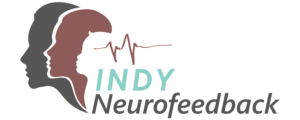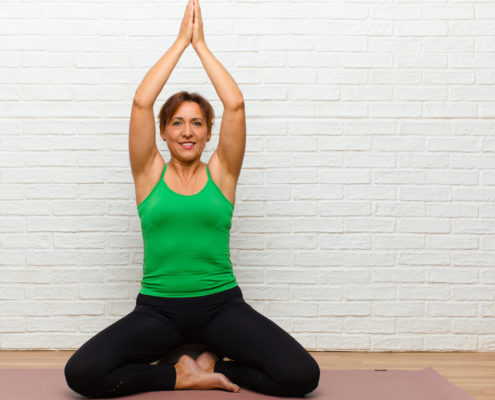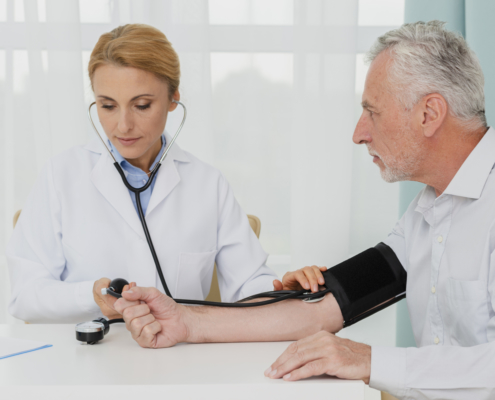Chronic Pain Affects COVID-19 Symptoms
 Those experiencing chronic pain, may not only be more susceptible to the COVID-19 virus, but if infected, may face additional consequences and higher morbidity risks than others.
Those experiencing chronic pain, may not only be more susceptible to the COVID-19 virus, but if infected, may face additional consequences and higher morbidity risks than others.
That’s because there is a complicated relationship between the brain, the immune system, and chronic pain, explains Leanne O’Neil, owner of INDY Neurofeedback. This relationship is heightened, we are just now seeing, when a COVID client has been taking long-term pain therapies.
Generally speaking, chronic pain clients can be considered immune-compromised. Many are elderly and have multiple and inter-related health issues. Some are also on long-term opioid therapies and steroids, which are known to interact with the immune system, often times, suppressing it. That makes pain management during COVID-19 treatment, especially with seniors, particularly tricky.
The COVID team at the Western Reserve Hospital in Cuyahoga Falls, Ohio, has discovered a complicated relationship between opioids and COVID-19:
“Patients who use opioids to manage pain need to be especially careful during COVID-19,” Dr. Rhayed Narouze, MD, PhD, of Western Reserve Hospital noted. “As doctors, we should be mindful that the more and longer opioids have been taken, the more patients lose respiratory reserves, and may not be able to fight this particular infection.”
“As with many virus-related diseases, COVID-19 can present with extensive muscle aches and pains,” weighs in Jeffrey Fudin, PharmD, of the Stratton VA Medical Center in Albany, New York. “This can aggravate various pain syndromes, particularly those involving muscle and bone, such as chronic back or neck pain.”
Since COVID-19 affects respiration, excessive coughing will likely worsen experienced pain. As the person becomes sicker – especially if they are elderly – there will be at an elevated risk of requiring sedation, leading to opioid-induced respiratory depression, which increases mortality.
For persons on one or more sedating drugs or opioids, the risk seems to be even higher. These drugs included in this initial observational study include:
- antidepressants
- skeletal muscle relaxants — especially cyclobenzaprine (Flexeril and others)
- carisoprodol (Soma), and
Chronic pain clients may be on oral steroids or may have received a recent steroid intervention, and thus may have an altered immune response. Steroids, for example, have been associated with a higher risk of influenza (and COVID).
So what can those with chronic pain do during the COVID pandemic to maintain health and wellness?
“We need to encourage continued movement and adaptive exercise options,” said Beth Darnall, PhD, of Stanford University in Palo Alto, California. Although they may not be able to attend regular physical therapy sessions (due to pandemic restrictions) to help manage pain, the good news is that there are a number of online tools available to demonstrate how to perform physical therapy exercises at home.
Here is a resource link from The American Chronic Pain Association to help patients stay active during the pandemic.
Clinical video can also promote client health and wellness, says Leanne O’Neil. This holds for medical, psychology, neurofeedback, and social work consultations, too. “Ideally,” O’Neil says, “clients need access to all three. This support can help those with chronic pain remain connected at a time when they may be feeling more isolated.”
Importantly, our clients with pain need to know how to get help if they need it. Let us know if you or a loved one need help managing chronic pain over and above prescription pain relief. That’s why we’re here.

 There’s been some recent buzz on the Internet about introverts. According to self-reporting, introverts seem to cope with quarantine conditions better than their more extroverted friends. If you’ve shared in similar discussions, you might wonder if you tend toward introversion or extroversion. Because, well — is anyone exclusively just one type of personality?
There’s been some recent buzz on the Internet about introverts. According to self-reporting, introverts seem to cope with quarantine conditions better than their more extroverted friends. If you’ve shared in similar discussions, you might wonder if you tend toward introversion or extroversion. Because, well — is anyone exclusively just one type of personality? Over the past 20 years, we’ve begun to understand how intensely breathing patters affect brain health and contribute to illness. Researchers working together with biofeedback techniques have
Over the past 20 years, we’ve begun to understand how intensely breathing patters affect brain health and contribute to illness. Researchers working together with biofeedback techniques have Language learning is a matter of concern for some parents who worry about their toddler’s timely language development. We’ve known for some time that frequent verbal engagement with babies can boost vocabulary and later, reading comprehension.
Language learning is a matter of concern for some parents who worry about their toddler’s timely language development. We’ve known for some time that frequent verbal engagement with babies can boost vocabulary and later, reading comprehension.

 Yes, high blood pressure and brain health are closely related, especially as we age. Here’s why:
Yes, high blood pressure and brain health are closely related, especially as we age. Here’s why: Diet soda + 10 years = increased risk of dementia & stroke
Diet soda + 10 years = increased risk of dementia & stroke  Those of us at INDY Neurofeedback were fascinated with a new study recently published in the medical journal
Those of us at INDY Neurofeedback were fascinated with a new study recently published in the medical journal  What is the pace of your usual walk? Brisk and peppy, or slow-paced? Turns out that the gait of your walk provides reams of information to onlookers and health practitioners about your age –
What is the pace of your usual walk? Brisk and peppy, or slow-paced? Turns out that the gait of your walk provides reams of information to onlookers and health practitioners about your age –  Adding insult in injury, strangers who were asked to assess the age of the participants from photos of their faces said the slow walkers even
Adding insult in injury, strangers who were asked to assess the age of the participants from photos of their faces said the slow walkers even